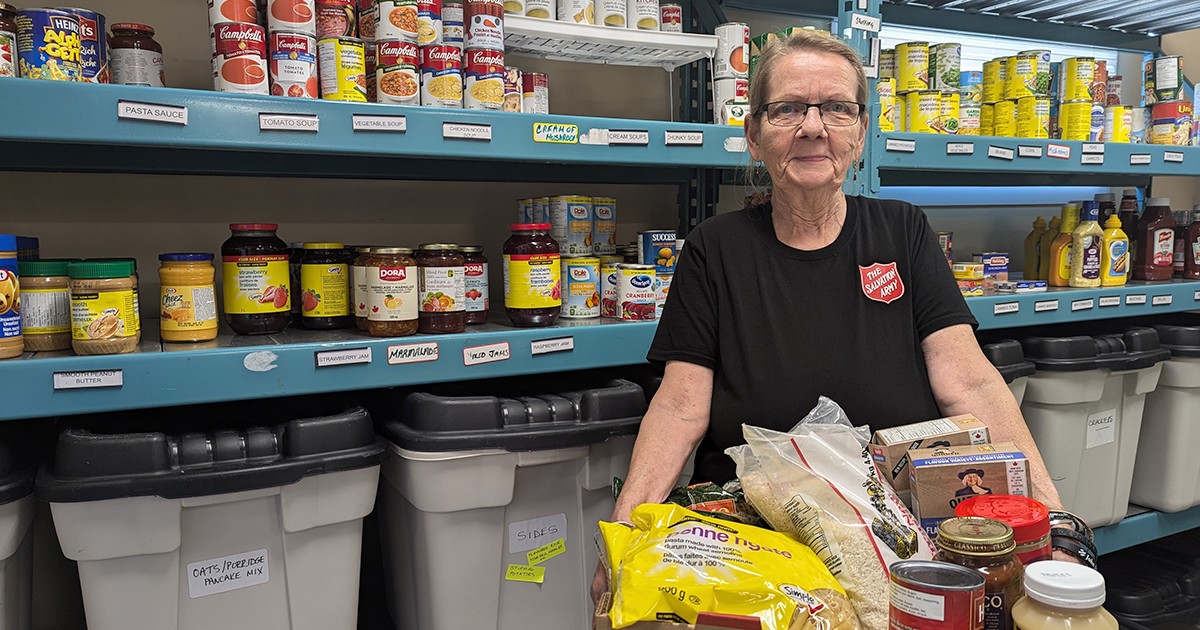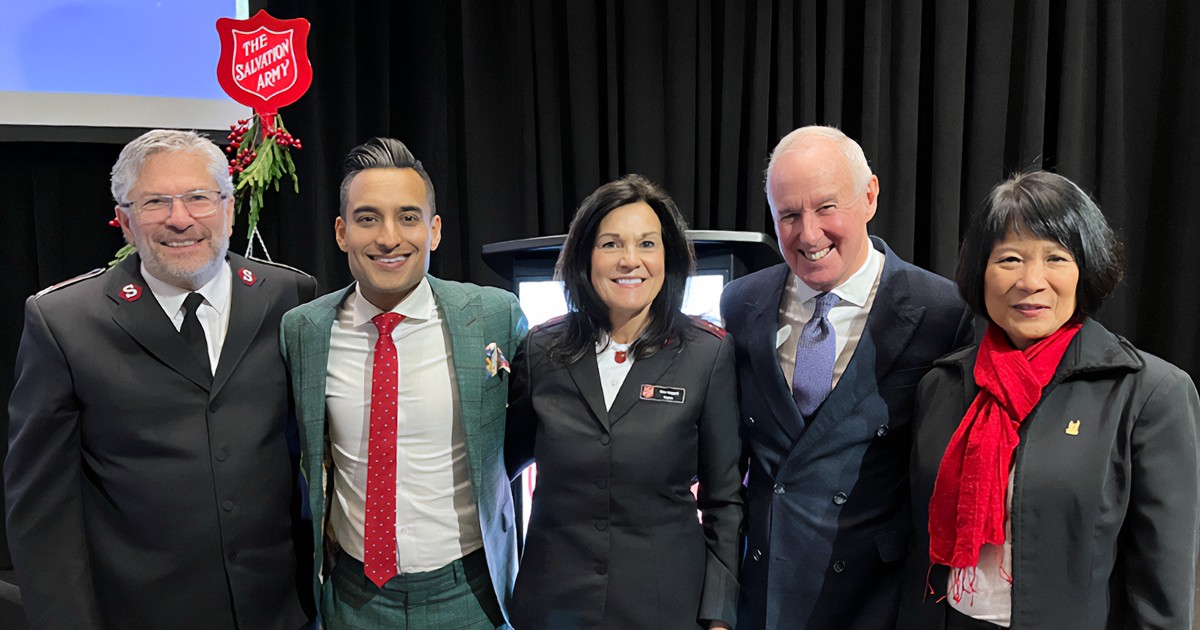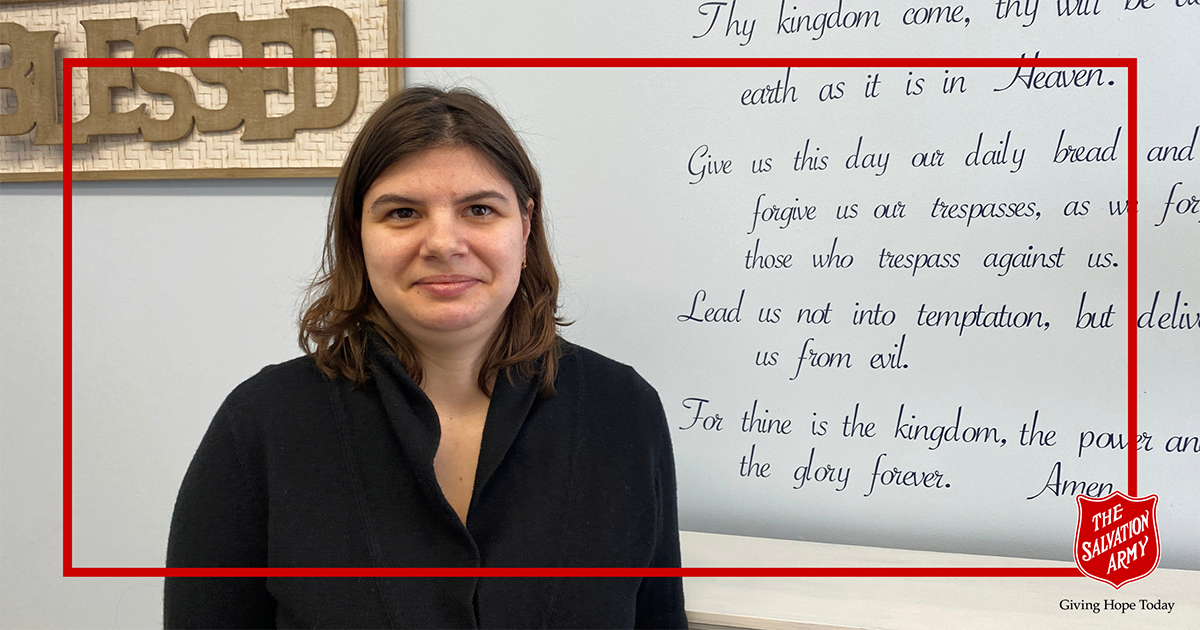When Shirley McDougall’s husband was injured at work in the 1990s and they needed a little extra help to feed their seven children and buy them new clothes for school while waiting on his workers’ compensation, she turned to the Wiarton, Ont., Salvation Army for help.
Now, living on a small widow’s pension that’s often not enough to cover all her basic needs, Shirley says The Salvation Army has again been helping her make ends meet. She’s turned to the food bank when her pension hasn’t stretched far enough to cover rent, bills and groceries; and her Salvation Army caseworker has helped her negotiate a back-rent payment plan with the housing provider, and provided financial support to help her purchase a new pair of glasses.
“I don’t know what I would do without them,” says Shirley. “Right now, my rent’s paid and my bills are mostly paid, but that’s what most of my money goes toward.”
Challenging Times
Major Mary Millar, the pastor at the Salvation Army church in Wiarton, says the public often make unrealistic assumptions about people who need support from a food bank or shelter.
“It’s not people who are not trying,” she says. “I’ll talk to people who are making minimum wage and pull me aside with tears in their eyes to say, ‘Could I get some help because my mom is sick, and we’ve been driving her down to London, Ont., and the costs have been significant?’ Or people who aren’t getting paid when they’re not working and have been off sick for 10 days with no income.”
Even though inflation has slowed, and the Bank of Canada has started to cut interest rates, many Canadians are still struggling with cost-of-living pressures, according to a recent Salvation Army survey of more than 1,500 Canadians. One in four respondents said they were extremely concerned about having enough income to cover their basic needs.
Three quarters said they faced challenges with food security. While purchasing discounted food items or shopping at discount retailers was the most common coping strategy, a notable 44 percent were cutting back on their groceries to pay other bills and stretch their money for the month, and 26 percent said they were skipping or reducing the size of meals—up from 21 percent in October 2023. One quarter also said they were eating less so their children or other family members could eat.

Overcoming Barriers
“It’s no secret that many Canadians are feeling increasingly squeezed by factors beyond their control,” says Lt-Colonel John Murray, territorial secretary for communications at The Salvation Army. “We have more families seeking assistance than ever before, and we’re acutely aware of the impossible choices they’re having to make.”
There has also been a “significant shift” in the types of clients seeking out The Salvation Army’s services since the pandemic, Lt-Colonel John says, with a far greater share of first-time users, particularly families and single parents.
The Salvation Army is one of Canada’s largest direct providers of social services. Last year alone, it provided more than 5,500 shelter beds and distributed 3.2 million meals across the 400 communities in which it operates. It also helped 2.1 million Canadians with essentials, including food and clothing.
By the time people show up at The Salvation Army, they’ve often already had to make “impossible choices” to stretch their limited resources, and some are dealing with the “very real possibility of being made homeless,” all of which take a major toll on their physical and mental health, Lt-Colonel John says.
He says The Salvation Army is working to reduce poverty through programs that help them overcome barriers to employment and stable housing.
“Amazing Partners”
In addition to its food banks, thrift store and shelter services, The Salvation Army runs a wide range of social services programs, including substance-use rehabilitation, after-school programs and camps, school nutrition programs, life skills and more.
Its Pathway of Hope program provides support from a dedicated caseworker to Canadians trying to achieve goals, such as getting their driver’s license, finding stable housing, earning their high school diploma, enrolling in a college or university program, or regaining custody of a child. Graduates of the program are paired with a mentor who can continue to support them.
“We see people are making steps and we help them continue up that ladder. It’s been smashingly successful,” says Major Mary. She notes that many people who turn to the organization feel ashamed of their circumstances and of needing help, and staff work to make them feel welcome, valued and supported.
Support from philanthropic partners has been crucial to The Salvation Army’s work, Lt-Colonel John says. In Wiarton, grants, donations and partnerships with other agencies have powered crucial social services, including a dental clinic, back-to-school backpack program for children, food hampers for families, summer camps and literacy programs for children, and the organization’s community garden.
“We have some amazing partners,” Major Mary says. “It’s one of the reasons we can do as much as we do.”
2023
NATIONAL STATISTICS
![]()
3 MILLION
visits made to The Salvation Army in Canada and Bermuda for assistance
![]()
1.1 MILLION
visits to community and family services for food and non-food services such as school supplies and baby products
![]()
112,000
school meals provided
5,500
shelter, addictions, detox, and mental health beds provided each night
![]()
438,000
visits for Christmas assistance including food hampers and toys
![]()
1,158
long-term care and supportive housing beds provided
![]()
170,952
nutritional snacks and other food items provided
![]()
3.2 MILLION
community meals were distributed
Reprinted from The Globe and Mail, November 15, 2024
This story is from:
New boost










Leave a Comment